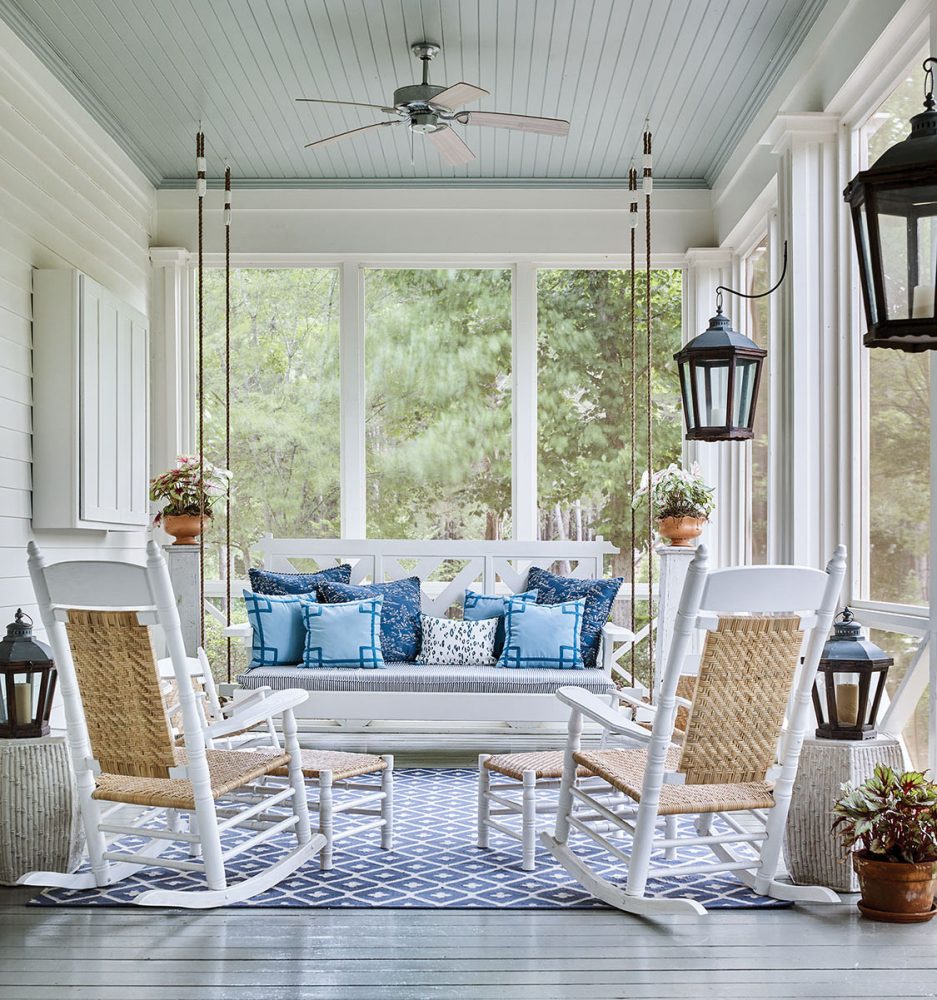
At Stevens-Coolidge Place in North Andover, Massachusetts, a field of sherbet- and lemon-hued blooms showcases Colorblends’ expertise in blending tulips bulbs.
Whether it’s time to plant tulips in the fall or harvest them for floral arrangements in the spring, these tips gathered from gardeners and floral designers featured in Flower magazine will help you get the best results. To inspire your creativity, we begin with our favorite tulip arrangements, from cheerful bunches of single-color tulips to glorious combinations with other spring blossoms. Then we move on to tips for growing, harvesting, and designing your own creations with tulips.
TIPS FOR GROWING TULIPS
When to plant: Plant tulips when temperatures average 60 degrees or lower. (This could be September in the North and December in the South.)
To pre-chill or not to pre-chill: Check with your local cooperative extension service to see if you need to pre-chill your bulbs prior to planting. If you pre-chill bulbs in the refrigerator, keep them away from vegetables, which release a gas that can keep bulbs from flowering.
pH: Bulbs like soil with a pH of 6 to 6.5. Have a soil test performed prior to planting in case you need to add lime or aluminum sulfate.
Sun and drainage: Be sure to plant in a sunny area with well-drained soil. Tulip bulbs rot in standing water.
Plant large bulbs a little deeper than recommended to ensure strong stalks.

Photo by iMoStudio | Shutterstock
For plant markers, try this tip from Wendy Walker, Horticulture Chairman of Garden Club of Virginia: “Several years ago, I started buying the sorry-looking, on-sale pansies at the end of the fall season and using them as markers for bulb plantings,” Wendy says. “Not only do these living placeholders help me avoid slicing through bulbs when I start transplanting seedlings, but they get full and glorious in the spring, creating an ideal carpet for bulbs.” For more gardening tips from Wendy, see “Southern Favorites in Springtime Gardens.”
Fertilize in fall and early spring with a bulb fertilizer to ensure stronger bulbs and a slightly longer bloom time.
Water your bulbs after planting. You should not have to water them again unless you live in a naturally dry area.
TIPS FOR HARVESTING & ARRANGING TULIPS
Harvest the flowers to bring in your home just before the bud fully blooms.
For cool storage: Carefully dig up the bulbs with the flowers still attached, says flower farmer Natasha McCrary of 1818 Farms in Mooresville, Alabama. “With the bulbs attached, I then tuck the tulips into crates to be stored dry in our cooler. Dry means they are not placed in water. Because the tulip is still connected to its food source, they can be stored for up to one month in the cooler.” She also wraps a bungee cord around the stems in the crate to keep them upright in the cooler. “This encourages tulips to straighten and extend their stem length,” she says.

Photo courtesy of 1818 Farms, @1818farms
Tulip flowers harvested with the bulbs attached. Bungee cords around the tulip-filled crate keep stems upright and straight in the cooler.
Put cut stems in water immediately. If you are purchasing tulips from a store, wrap the cut stems in wet paper towels to keep them from drying before you get them home.
Cut each tulip stem at an angle with a sharp knife or floral snips. This will make the tulips last longer and make them easier to insert into the arrangement.
Remove unwanted leaves by gently pulling them back and peeling them away from the stem.

Remove unwanted tulip leaves by gently pulling them back and peeling them away from the stem.
In case you have a droopy tulip, you can wire it around the stem from top to bottom to hold it upright. (Of course, for a naturalistic or artful look, downward curving stems may be just what you are after.)
To keep tulip petals from opening up any further, take a straight pin and prick each tulip through the stem just beneath its bloom.
For more open tulips: “An insider trick I picked up is to manually open up tulips,” says New York event designer Mimi Brown. “Gently flip back the outer petals; this can be just a smidge, or it can be pulled way back. (If a petal splits, don’t worry.) Doing this can dramatically change the look of the flower.”

Photo by Becky Luigart-Stayner
Mimi Brown shows how to gently reflex the petals of a tulip.

Photo and floral design by Lauryl Lane
Fully open tulips make a statement.
Experiment with letting tulips open fully for a dramatic look. California-based floral designer Lauryl Lane says, “I love letting them pop like that. Of course they don’t last very long after they’ve fully opened, but if you time it just right, they are stunning in event arrangements.”
Finally, you’re not imagining it! Your cut tulip stems will continue to grow in the vase.
FAVORITE TULIP ARRANGEMENTS

Photo © Charlotte Moss from her book Charlotte Moss Flowers (Rizzoli New York, 2021)
Renowned interior designer Charlotte Moss displays deep purple tulip blooms in a tulipiere. Originally designed as a vessel for forcing bulbs in the 17th century, tulipieres are popularly used in modern times as vases for all sorts of cut flowers.

Photo by Kindra Clineff
Sandra grounded her “totally tulip” arrangement in a pedestal container, letting the various double, French, and lily-flowered forms of tulips express depth.
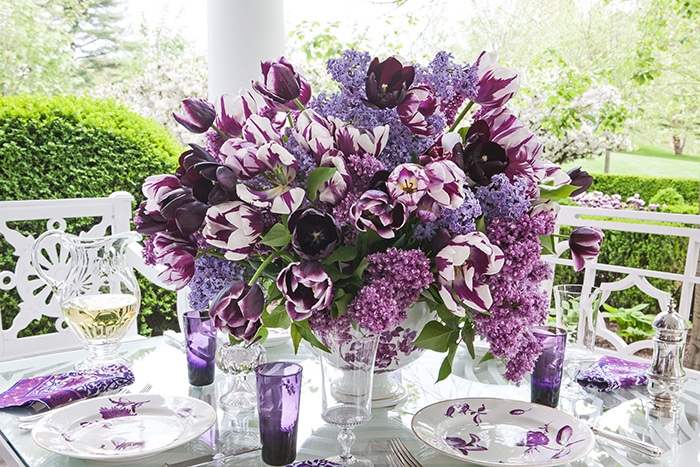
Photo ©2015 by Carolyne Roehm
Lilacs mingle with several varieties of tulips clipped from Carolyne Roehm’s garden in an elegant centerpiece for a purple-themed table.
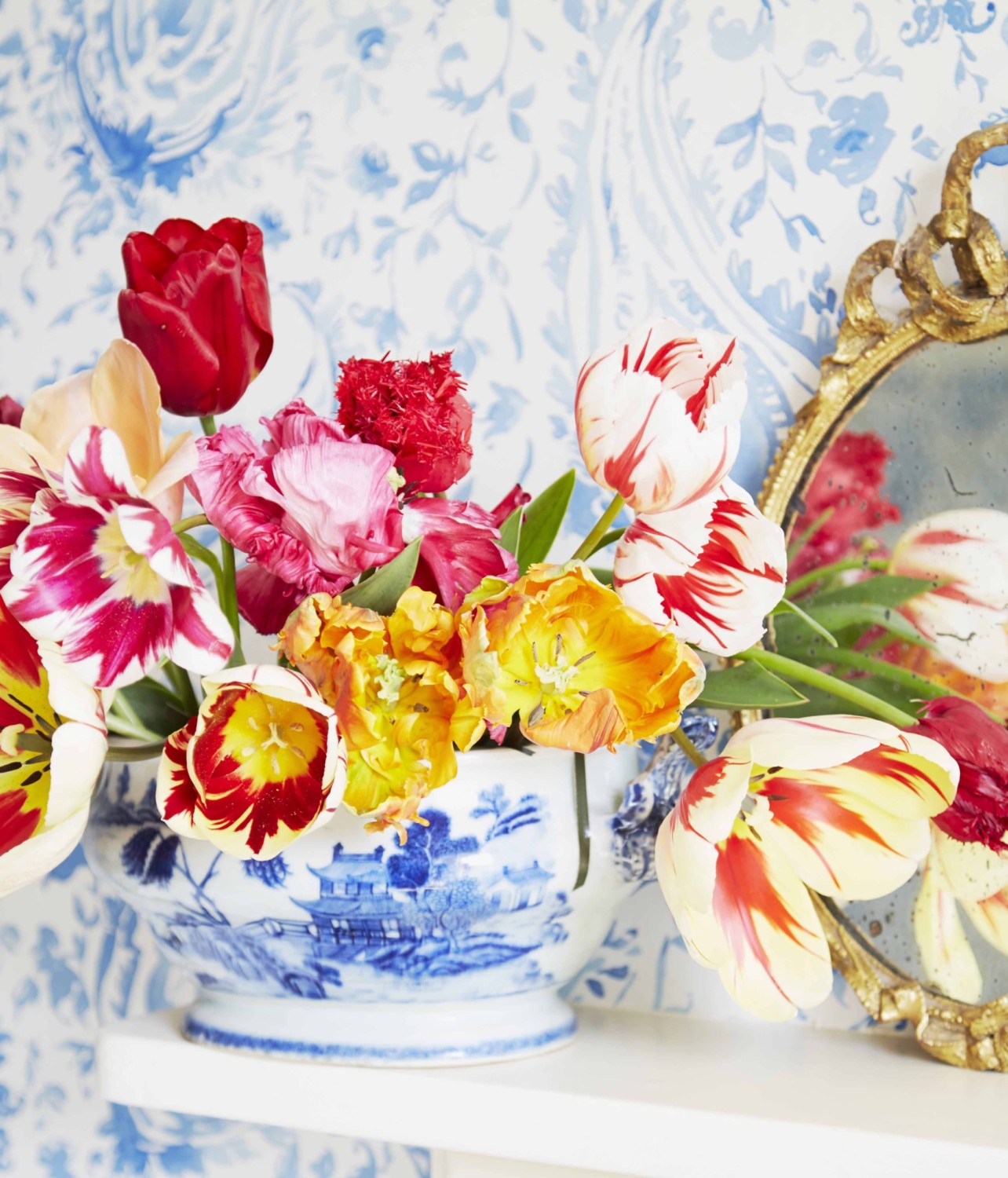
Photo by Emma Mitchell
Crossley favors big bunches of tulips in vintage jugs and old ceramic cachepots, not a few singular stems dotted around.

Photo by Jessica Glynn
Tom Mathieu's green and white "garden in a box" arrangement features white tulips along with ‘Green Eyed Beauty’ garden roses, hyacinths, hellebores, variegated ivy, and moss.
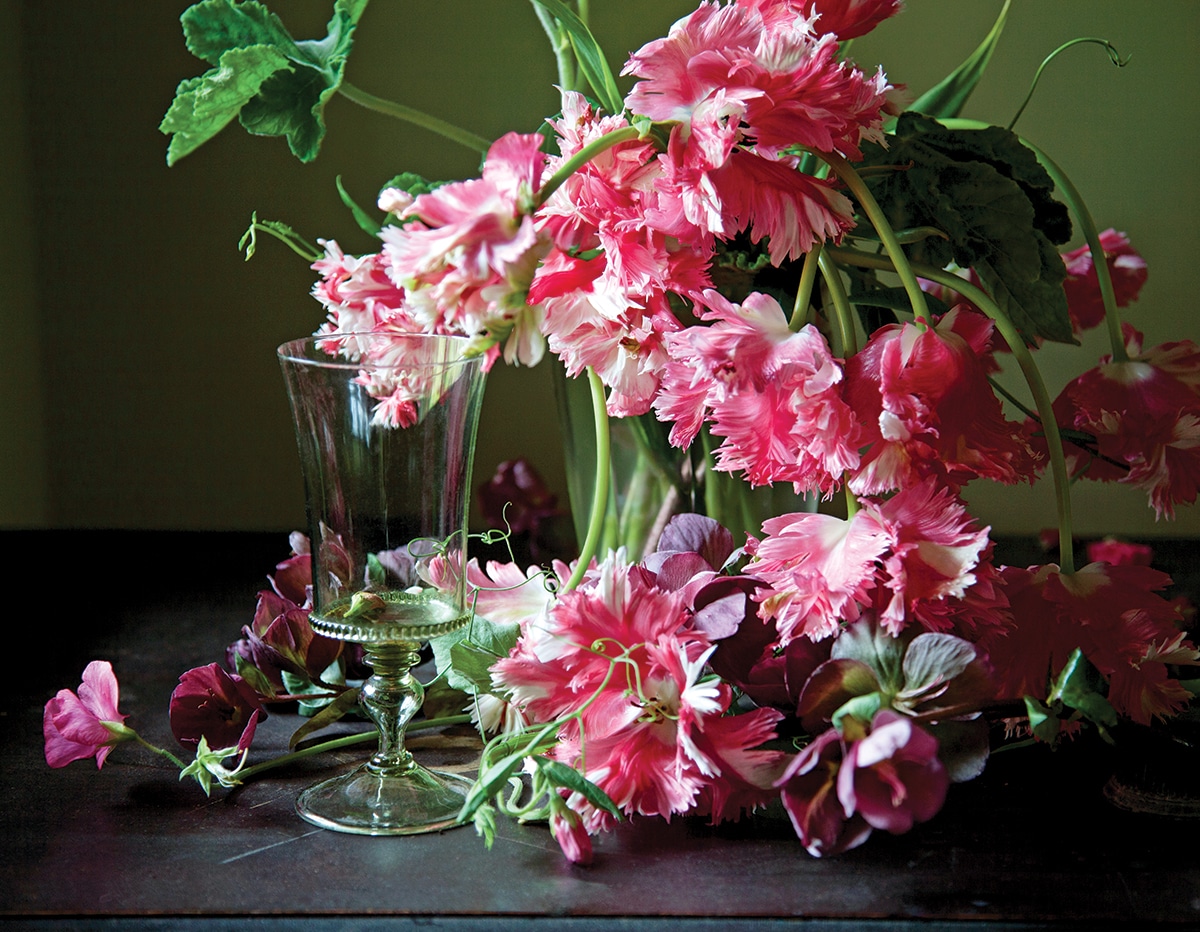
Photo by Don Freeman
In Lewis Miller’s book, Styling Nature (Rizzoli New York, 2016), the floral designer breaks down his method of arranging. These parrot tulips remind us "that the silhouette of an arrangement will change over time. An arrangement is a living thing; by day three the flowers will have taken on a new shape."
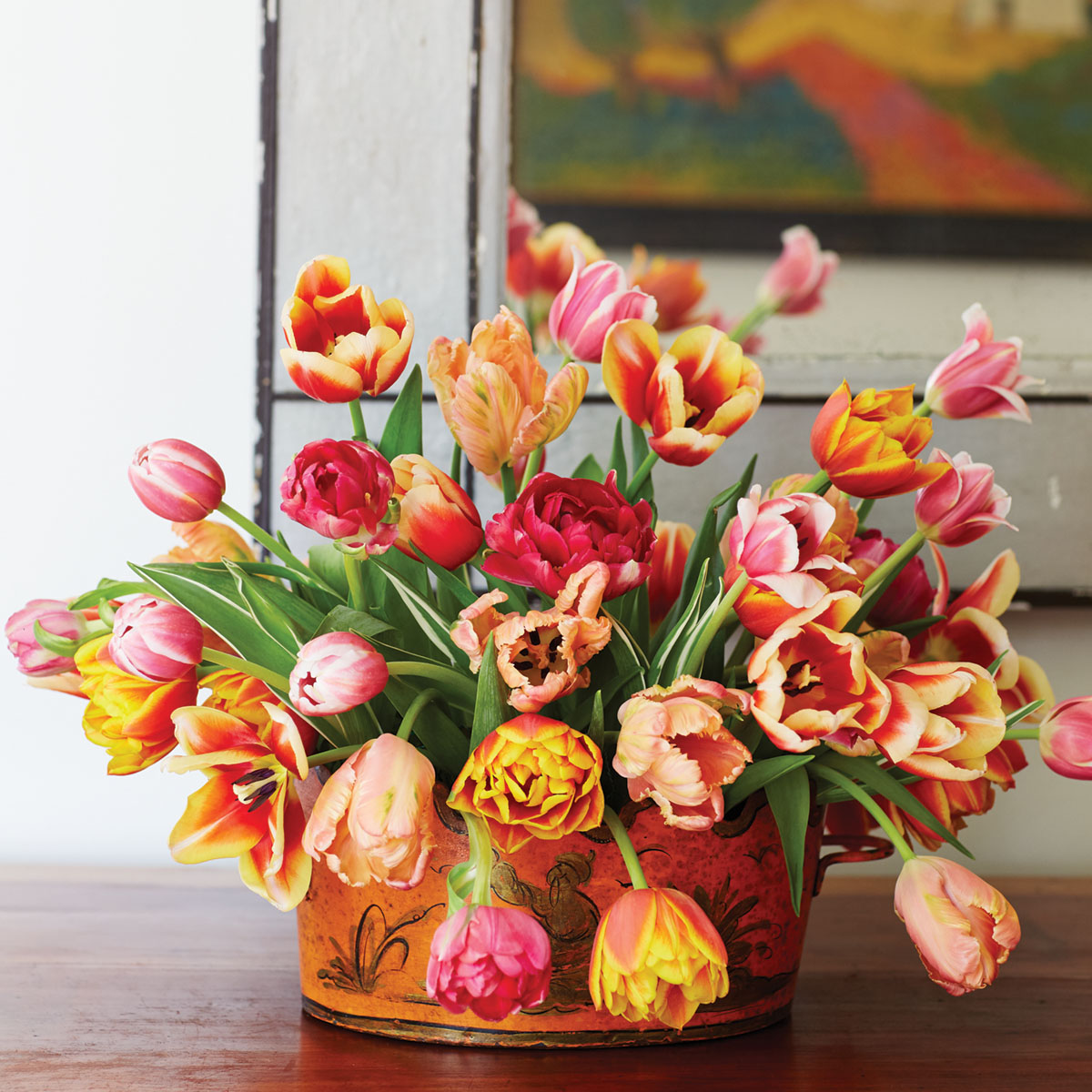
A simple gathering of tulips in a tole jardinière brightens a room. See designer Mimi Brown’s step-by-step instructions for this easy-to-assemble arrangement in an excerpt from Living Floral by Margot Shaw (Rizzoli, 2019).

Photo by Stephen Young
New Orleans antiquarian, decorator, and all-around bon vivant, Patrick Dunne has to look no further than his shop, Lucullus, for interesting floral containers, including this 19th-century pitcher that holds French tulips.

Photo by Elizabeth Messina
Parrot tulips and fringed tulips dance among ranunculus, Japanese sweet peas, California lilacs, honeysuckle vine, and Pieris japonica in a pink flower arrangement by floral designer Kate Holt. “Layers, lines, shapes—all of it to me is like a soft, sculptural, breathing puzzle,” she says.

Photo courtesy of Carolyn Roehm from her book, A Garden Home with Carolyne Roehm
For one of her house guests, Carolyne Roehm presented a spread of fruit and shortbread cookies next to an arrangement of red and yellow 'Flair' tulips.

Photo by Clive Nichols
Celebrated garden designer Butter Wakefield opts for nontraditional Christmas colors when decorating her West London home for the season. Here, she filled a pink lusterware vessel with orange tulips from the flower market.

Photo by Sheila Goode | Floral design by Nouveau Flowers
Rustic clay pots filled with tulips, lavender, roses, hellebores, and bay leaves are at home on a wooden “trattoria” table.

Photo by Kerry McCaffety
In New Orleans, hostess Jane Scott Hodges sets the stage for an afternoon with friends at her home in the Garden District. Each place setting includes flowers in sun-drenched hues. This plate gets a glass of simple, showy tulips. Don't miss Hodges' table linen tips.
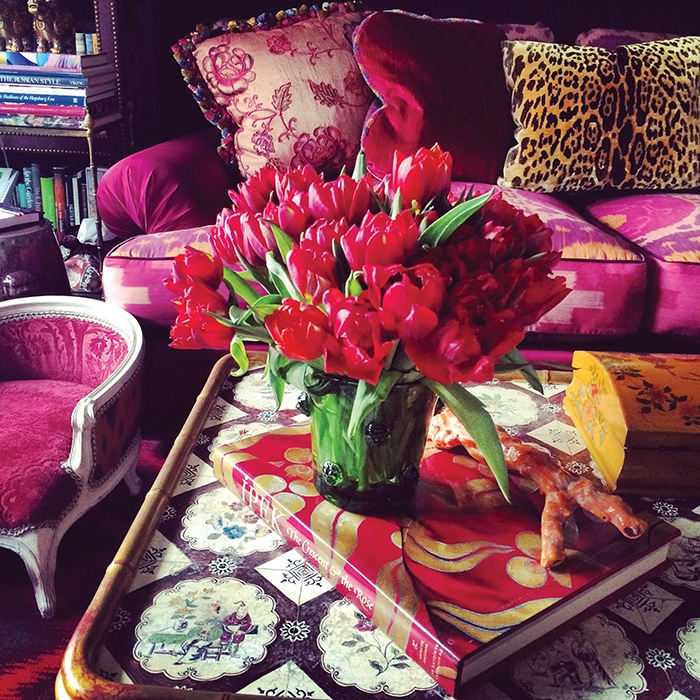
Photo by Alex Papachristidis
Interior designer Alex Papachristidis snapped this vase of red tulips to share on his Instagram profile, @alexsviewpoint. "Tulips from Zezé—a sign that spring is coming," he wrote.

For a wedding where he used only yellow flowers, Steve Bales suspended tulips above a 16-foot-long dining table covered in a mirror, which reflected the blooms hanging overhead.
OUR FAVORITE TULIP QUOTE
“I love tulips better than any other spring flower; they are the embodiment of alert cheerfulness and tidy grace, and next to a hyacinth look like a wholesome, freshly tubbed young girl beside a stout lady whose every movement weighs down the air with patchouli. Their faint, delicate scent is refinement itself; and is there anything in the world more charming than the sprightly way they hold up their little faces to the sun. I have heard them called bold and flaunting, but to me they seem modest grace itself, only always on the alert to enjoy life as much as they can and not be afraid of looking the sun or anything else above them in the face.” ― Elizabeth von Arnim from Elizabeth and Her German Garden (1898)



